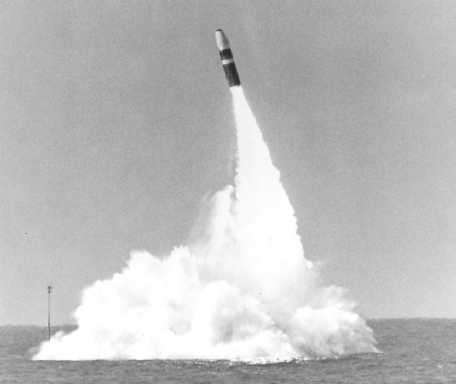to prevent conflicts that are adverse to U.S.
interests. The carrier battle group can quickly
respond to crises in areas where U.S. interests
require a military presence. The carrier can
remain offshore to show America’s interest in
affairs ashore. The carrier battle group and its
associated naval units have the means to respond
to almost any event.
Aircraft carrier battle groups contribute
directly to the United States’ capability to counter
a major Warsaw Pact attack against the North
Atlantic Treaty Organization (NATO). These
mobile forces help keep major sea-lanes open
against potential threats. Together with other
services, they provide major offensive initiatives
should a NATO/Warsaw pact war or lesser conflict
occur. Carrier-based tactical aircraft can wage
concentrated tactical air power in remote areas of
the world where the United States does not have
land bases.
SUBMARINE FORCES
Historically, the mission of a submarine has
been to seek and destroy both combatant and
noncombatant enemy surface ships. Now the
primary mission of the submarines is to seek and
destroy enemy submarines. The advent of the
nuclear-powered ballistic missile submarine added
an entirely new mission—the delivery of ballistic
missile attacks against assigned shore targets.
In 1955 the Chief of Naval Operations ordered
the development of a weapons system capable of
launching a missile from a submerged submarine.
The system was to be able to hit any point on the
earth’s surface with a nuclear warhead—a
complex engineering feat never achieved in
history. The system was envisioned to have three
basic components—missiles, a launching platform,
and a navigation system that would continuously
show the ship’s position under all conditions.
The United States launched its first fleet
ballistic missile (FBM) submarine, George
Washington, SSBN-598, in June 1959. It contained
16 launching tubes equipped with Polaris A-1,
1200-nautical-mile-range missiles. The submarine
conducted its first successful test on 20 July 1960
off Cape Canaveral. In November 1960, the FBM
system
became
operational
when
George
Washington deployed on its first 60-day patrol.
Since then, several versions have been developed,
including the Poseidon and the Trident.
Trident I C4 FBM.
1-6

